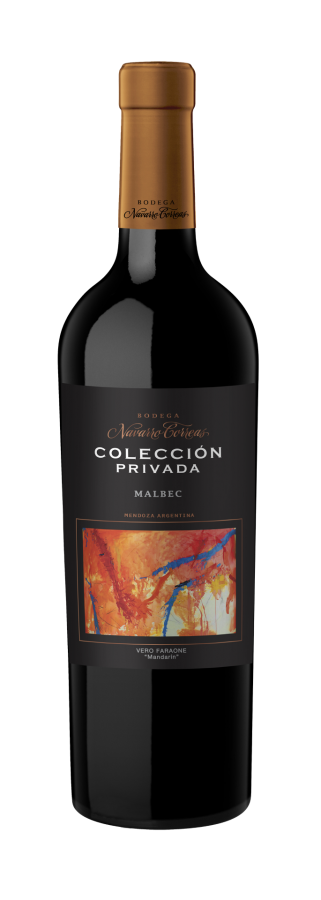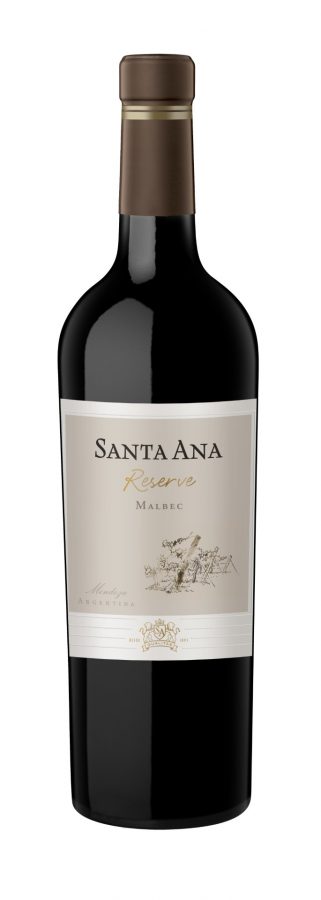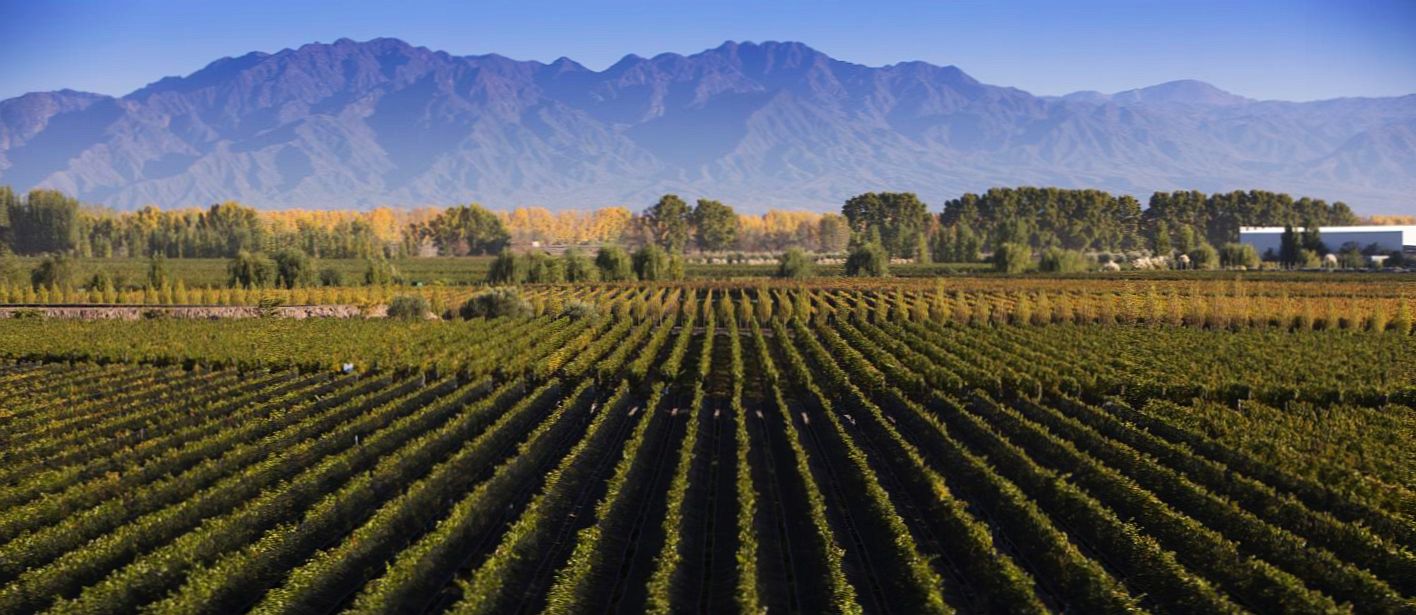April 17 is Malbec World Day and we can’t think of a better reason to pour yourself a glass of one of Argentina’s most popular exports.
Though the syntax of ‘Malbec World Day’ often confuses English speakers – who would generally want to call it ‘World Malbec Day’ – the phrase is translated from the Spanish from Argentina, Día Mundial del Malbec, and because of a long-ago promotion of this translation, ‘Malbec World Day’ stuck.
The perplexing word order notwithstanding, the date of April 17 is set aside each year to commemorate and celebrate the date in 1853 on which Argentine President Domingo Faustino Sarmiento officially declared it his mission to transform the country’s wine industry.
President Sarmiento turned to Michel Aimé Pouget, a French soil expert, tasking him with bringing new vines to Argentina from France. Among the varietals Pouget brought over was Malbec, a plump, dusky purple grape used primarily for blending in France, most notably in the Cahors region of the country. The rest, as they say, is history.
A decade after Pouget arrived in the South American country with Malbec vines, France – and much of Europe – saw the great phylloxera plague decimate their vines, and a lot of the wine industry with it.

Meanwhile, Malbec thrived in its new home, particularly in Argentina’s high-altitude Mendoza region. Over time, the grape became the dominant variety in Argentina, and the quality of Malbec wines drew extensive praise, particularly from the United States, a relatively nearby and huge wine market for export.
Much later, in the 1990s, winemaking in Argentina had progressed significantly and Malbec was positioned as the superstar varietal of the country, much like Cabernet Sauvignon defines Napa Valley, Riesling is a German star, and Shiraz carries much of Australia’s wine industry. By a few years after the turn of the century, winemakers in Argentina had ‘gotten serious’ and moved beyond just the mass-market Malbecs that were being exported by the shipload, and it was plain to see that with this new attention given to producing bold yet elegant wines, the quality of Argentinian Malbecs had unquestionably eclipsed those of the grape’s home country.
Today, if you want a really good Malbec, you need look no further than Argentina, now the fifth- or sixth-largest wine producer in the world (depending on who you ask), just behind Australia. The country is home to some of the world’s highest vineyards and this has a positive impact upon grape production. Some 1,500 km separate the Salta wine region in the north and Patagonia in the south while Mendoza and Uco Valley situated in between both dominate the market (some 75% of the nation’s wines are produced in and around Mendoza and 95% of the nation’s exports originate here). Most wine is produced in the foothills of the Andes Mountains in a rain shadow so rainfall is low but vineyards are well supplied with melting snow waters.

While the Argentine wine market is dominated by Malbec, other local and international grape varieties are used to produce single varietals or blended wine styles. Malbec leads the charge but there are also plantings of other red varieties like Cabernet Sauvignon, Syrah, Barbera, Tempranillo, and Sangiovese plus whites of Chardonnay, Sauvignon Blanc, and Torrontés.
Malbec is often blended with other red varieties such as Syrah, Cabernet Sauvignon and Tannat. For example, Structura Ultra (see below) is a typical Bordeaux blend comprising Malbec, Cabernet Sauvignon, Cabernet Franc, and Merlot.
If your palate gravitates to big, fruit-driven red wines (read Australian Shiraz styles), you will doubtlessly enjoy many of the flagship Malbecs from Argentina. They tend to be plump, dense, and tannic and full of rich, bold and spicy flavours dominated by dark berries (mulberries and blackberries). In addition, they are full-bodied with a powerful long finish and often obvious oak flavours. Many value-for-money Malbecs are made for easy drinking and early consumption while the higher priced ones are often bottled for cellaring for up to 10 years.

Though Argentinean Malbec prices run the gamut from affordable to eye-popping, among the most coveted bottles come from Nicolas Catena Zapata’s Adrianna Vineyards in the Uco Valley, with the 2012 Fortuna Terrae, along with the River Stones 2017 and 2018 vintages being particularly well-regarded. Another superb bottle to look out for would be Michel Rolland’s Clos de los Siete, 2017 vintage.
Fortunately, of course, there are many excellent Malbecs at very approachable price points, too. This varietal yields a versatile red wine and pairs well with a range of diverse dishes from spicy Moroccan to traditional Italian, along with Asian food, oxtail soup, sticky barbecued beef or pork ribs, Chinese-style ribs, beer-braised beef, chicken wings, and grilled chicken. Malbec should be served at 12-15°C which means a little chilling before serving.
In celebration of Malbec World Day, here are four Malbec (or Malbec-dominated) wines that recently captured our attention – any of these are well worth seeking out in Malaysia’s marketplace!
Bodega Navarro Correas, Colección Privada Malbec

This affordable red is aged for 12 months with 40% of it matured in oak barrels (the rest is in stainless steel). The grapes are grown in several areas around Mendoza – Perdriel and Agrelo in the Luján de Cuyo Department (Luján de Cuyo is a premium district), Tunuyán in the Uco Valley and Barracas in the Maipú Department. Altitudes range from 650 to 1,060 m above sea level and low evening temperatures foster slow grape maturation which enables flavours and aromas to fully develop.
This purplish-red wine is brimming with red berries and jammy plum flavours plus a medium body with silky soft tannins. Being a fresh, fruity wine, it pairs well with roast beef or pork, poultry and pasta, risotto, and semi-hard cheeses. It’s also a fine companion for a meaty, cheesy pizza.
- Producer: Bodega Navarro Correas
- Region: Mendoza
- Vintage: 2013
- Grape Varieties: Malbec
- Alcohol Content: 13.5%
- Closure: Cork
- Price: RM82
Bodega Navarro Correas Structura Ultra Gran Blend

One of the estate’s top-flight reds is a Bordeaux-style blend matured for an impressive 24 months in new French oak barrels. As a general rule, the longer a wine spends maturing in oak, the better the wine flavours and thus, the higher price it commands. Its fruit is sourced from several Uco Valley sites situated at altitudes between 1,000 and 1,200 m above sea level. The vineyards here benefit from marked daily temperature variations (grapes thrive in these conditions). This enables a slow maturation over a long period and the development of complex aromas and flavours.
The wine is a blend of four grape varieties, but this varies slightly from year to year as the winemaker tweaks the blend based upon the quality of the fruit sourced from various locations. Consumers can be assured that the estate’s highest quality grapes contribute to this wine. It has aromas and flavours of plums, black cherries, blackberries, truffles, and spices. The wine is full-bodied, complex, and with noticeable, assertive tannins. If you’re lucky enough to possess a bottle of Structura Ultra, cellar it for a few years (up to 10) and then decant it prior to serving as it is unfined and unfiltered.
- Producer: Bodega Navarro Correas
- Region: Mendoza
- Vintage: 2013
- Grape Varieties: Malbec (60%), Cabernet Sauvignon (30%), Cabernet Franc (7%), Merlot (3%).
- Alcohol Content: 14%
- Closure: Cork
- Price: RM259
Mascota Vineyards Unánime Malbec

The fruit is sourced from two locations in the Mendoza region where breezes from the Andes and along the Mendoza River assist in the gentle ripening of the grapes grown in vineyards averaging 30 years in age. Mascota is part of the Grupo Peñaflor which is one of the world’s largest wine producers and also the owner of well-known Argentinean brands such as Trapiche, Finca Las Moras, Navarro Correas, and Santa Ana.
Master Winemaker Rodolfo ‘Opi’ Sadler uses natural yeasts in fermenting this wine and then oversees 15 months aging in new French oak. Enjoy its deep red colour and aromas of plums, cherries, and ripe fruit. There is a hint of fruity sweetness which is balanced by smooth but robust tannins. Mascota wines have a fine pedigree as the estate’s Cabernet Sauvignon was recognised as the world’s best red wine in 2018 (at Vinalies Internationales).
- Producer: Mascota Vineyards
- Region: Mendoza
- Vintage: 2017
- Grape Varieties: Malbec
- Alcohol Content: 14%
- Closure: Cork
- Price: RM136
Santa Ana Reserve Malbec

Malbec grapes for this reserve wine are grown at altitudes from 750 to 1,100 m above sea level and then processed and aged for nine months in French and American oak. Its inky, purple colour leads to aromas and flavours of plums and black cherries with traces of spicy pepper. This easy-drinking wine offers good value and has a soft and well-rounded finish with spicy notes and a hint of rounded tannins. Enjoy it with cheese, red meats, mushrooms, stews, and barbecues (known as asado in Argentina).
- Producer: Santa Ana
- Region: Mendoza
- Vintage: 2020
- Grape Varieties: Malbec
- Alcohol Content: 13.5%
- Closure: Cork
- Price: RM73
"ExpatGo welcomes and encourages comments, input, and divergent opinions. However, we kindly request that you use suitable language in your comments, and refrain from any sort of personal attack, hate speech, or disparaging rhetoric. Comments not in line with this are subject to removal from the site. "





















